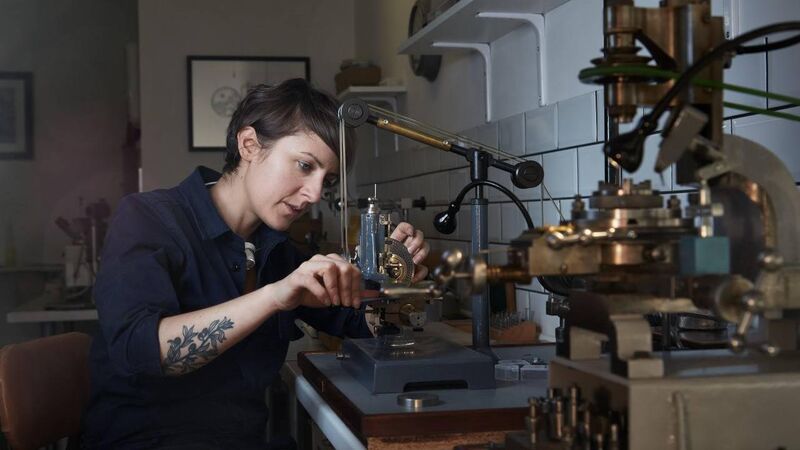Book Review: Will the venerable old craft of watchmaking defy the hands of time?

Rebecca Struthers author of 'The Hands of Time: A Watchmaker’s History of Time'
- The Hands of Time: A Watchmaker’s History of Time
- Rebecca Struthers
- Hodder and Stoughton, £22
When, 26 years ago, Mark Kurlansky published his wonderful book he rejuvenated the genre that considered great change through a narrow, single prism.
In the decades since, our world has had to confront the consequences of insatiable rapacity in more ways than the collapse of once-unimaginably abundant Atlantic cod stocks. Others followed Kurlansky and wrote books on coffee, saffron, black tulips, and many other left-of-field subjects.
Fiammetta Rocco, 20 years ago, gave us describing how, after ten cardinals and hundreds of their staff died of malaria while electing a new pope in 1623, the newly-anointed Pope Urban VIII determined to find a cure. Less than a decade later a Jesuit apothecarist sent some quinine from Peru where the malady was unknown. Made from the bitter red bark of the cinchona tree found in the Andes, the alkaloid cured the disease that had undermined the Roman empire, killed thousands of British troops in Holland in 1809 and ravaged both armies in America’s civil war.
After — an international bestseller translated into 15 languages — American journalist Kurlansky wrote and . Neither was as wonderful as suggesting a professional relationship with the idiom rather than the subjects. He took a view but may not have carried a flame for his subjects; he was a professional rather than passionate writer.
That accusation cannot be levelled at Rebecca Struthers. She, and her husband Craig, are practitioners first — they make watches for a living in Birmingham’s Jewellery Quarter — and an author as a consequence of her loving relationship with her craft.
The prices for their traditionally made watches start at around €60,000 putting them very much at the entry level in a world where some commissioned watches can cost more than €600,000. Those indulgent figures are another symptom of the deepening inequalities in our world, but Struthers’ writing makes it clear, as anyone writing about a subject they love does, that her motivation is her dedication to a dying craft rather than economic.

She records that there are fewer than a dozen people in Britain capable of making a mechanical watch from scratch today — how many are there in Ireland? She shares her and her husband’s fascination with a craft that, like cod and quinine “changed our world”.
It is sobering to be reminded of how deep that change, that advance was. Developments in timepieces made navigation more precise for ships’ captains which was a boon for explorers, travellers, and businesses but it had dire consequences for those unfortunate souls targeted by slavers — improved navigation made them more easily found and thus enslaved.
The opposite side of that coin, thankfully there is one, helped protect factory workers from unscrupulous employers. Workers, once they could buy a mass-produced watch for $1, could independently measure their working day and defy employers who often claimed their workers started too late and finished too early. This innovation was one of the bricks that eventually built the trade union movement and underpinned the social construct so in jeopardy today.
This engaging, rewarding book is full of mechanical complexities and many wonderfully interesting details. Included is a brief description of the Lebombo Bone, an artefact discovered in 1940 in South Africa. Discovered in a cave overlooking Swaziland that was continuously inhabited by humans for 120,000 years, it is a carved baboon fibula, about the length of an index finger with 29 clear notches. One theory suggests this device was used to measure the phases of the moon making the bone one of the earliest known timepieces.
will appeal to anyone interested in the complexities of making things, and how societies pursue, manage, and implement innovation and how science — in this instance timekeeping — can bolster democracy.







